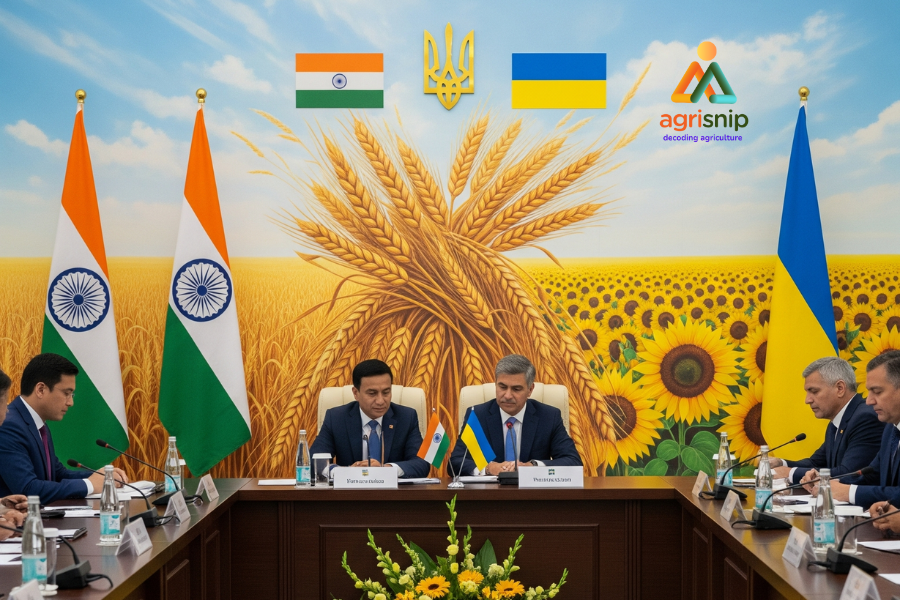
by Shahu Pawar | Jul 2, 2025 | Editors Pick, Technology
How Will Partnerships with Private Firms Expand AI Options Available to Farmers?
1. More Innovation, More Choices
- Private companies are experts in building new technologies and AI tools.
- When the government partners with these companies, farmers get access to a wider range of smart solutions—from crop monitoring apps to AI-powered pest alerts and market price prediction tools.
2. Faster Development and Deployment
- Private firms move quickly and can turn ideas into working products much faster.
- These partnerships help bring the latest AI tools to farmers sooner, instead of waiting years for government-only projects.
3. Customized Solutions for Local Needs
- Private companies can work closely with farmers to create AI tools that solve real, local problems—like drought prediction for Maharashtra or disease alerts for specific crops.
- This means farmers get tools that are actually useful for their unique situations.
4. Better Training and Support
- Many private firms offer training programs and customer support to help farmers learn and use new AI technologies.
- This makes it easier for farmers to adopt and benefit from these tools.
5. Access to Global Best Practices
- Partnerships with national and international companies bring world-class technology and expertise to Maharashtra’s farmers.
- Farmers can use the same advanced AI tools that are helping growers in other successful agricultural regions.
6. Affordable and Scalable Solutions
- With government support and private sector efficiency, AI tools can be made more affordable and available to many more farmers.
- Companies can scale up quickly, reaching thousands of farmers across the state.
7. Continuous Improvement
- Private firms are always updating and improving their products based on feedback.
- Farmers benefit from regular updates and better features as technology advances.
In Summary
Government partnerships with private firms mean more AI options, faster access, better training, and solutions that truly fit farmers’ needs. This leads to smarter, more productive, and more profitable farming for everyone.
Simple Example:If a private company creates an AI app that predicts the best time to irrigate crops, and the government helps test and spread this tool, thousands of farmers can use it quickly, saving water, increasing yields, and earning more.

by Shahu Pawar | Jul 1, 2025 | Editors Pick, Technology
How Will Government Funding Create New Opportunities for Farmers to Adopt AI?
1. Making AI Tools Affordable and Accessible
- Government funding helps pay for the development and testing of AI tools, so farmers don’t have to bear the high costs.
- This means farmers can access modern technology—like crop prediction apps, pest alerts, and smart irrigation—at low or no cost.
2. Building Shared Digital Infrastructure
- The government is creating a Digital Public Infrastructure (DPI) that collects and shares important data (weather, soil health, market prices, etc.).
- Farmers can use this data through easy-to-use apps and platforms, helping them make better decisions and increase yields.
3. Supporting Startups and Innovators
- Funding is given to startups and research groups to create new AI solutions for real farm problems.
- These new ideas are tested and improved with government support, and then made available to farmers.
4. Training and Capacity Building
- Special funds are set aside to train farmers and agricultural staff on how to use AI-powered tools.
- Farmers learn how to use new apps, sensors, and devices, making technology adoption easier and less intimidating.
5. Pilot Projects and Scale-Up
- The government supports pilot projects to test AI tools on a small scale first.
- If successful, these solutions are rolled out to more farmers across the state, ensuring only the best tools are widely adopted.
6. Encouraging Partnerships
- The policy promotes public-private partnerships with universities, companies, and research institutions.
- These collaborations bring in expertise, new ideas, and more resources, speeding up the spread of technology.
7. Reducing Risks for Farmers
- By funding and supporting AI adoption, the government reduces the risk for farmers trying new technologies.
- Farmers can try out new tools without worrying about losing their investment if something doesn’t work as expected.
In Summary
Government funding removes financial barriers, supports innovation, and ensures farmers get the training and tools they need to use AI. This creates many new opportunities for farmers to adopt modern technology, improve their incomes, and make farming more efficient and resilient.
Simple Example: Imagine a farmer who wants to use an app that predicts the best time to plant crops. With government support, this app is free or very cheap, comes with training, and is proven to work well, making it easy for the farmer to try and benefit from AI!

by Team Agrisnip | Jun 21, 2025 | Agri News, Global Agri, Technology
In a move to boost agricultural cooperation, India and Ukraine held their first Joint Working Group meeting on June 18, 2025. Key discussions focused on seeds, food safety, digital tech, and Ukraine’s agricultural exports to India—including apples, meat, and dairy.
India and Ukraine have taken a significant step in strengthening their agri-sector partnership. The first-ever India-Ukraine Joint Working Group on Agriculture met virtually on June 18, 2025, opening new avenues for collaboration in seed production, oilseed cultivation, horticulture, agricultural mechanisation, digital technologies, fisheries, and food safety.
Hosted online, the meeting was co-chaired by Oksana Osmachko, Deputy Minister of Agrarian Policy and Food of Ukraine, and Ajit Kumar Sahu, Director at the Indian Department of Agriculture and Farmers Welfare. The session brought together key representatives from ministries and regulatory bodies of both nations, including India’s FSSAI, Department of Animal Husbandry, and the Ministry of External Affairs.
One of the highlights was the successful delivery of the first trial shipment of Ukrainian apples to India—marking a fresh beginning in Ukraine’s agricultural exports to the Indian market. Both sides discussed future prospects for importing meat and dairy products, showing India’s growing interest in diversifying its agri-import sources.
Ukraine was also invited to participate in World Food India 2025, a major agri-food event to be held in New Delhi from September 25 to 28. This exhibition could open new business doors for Ukrainian agri-companies and give Indian stakeholders access to high-quality Ukrainian produce and technology.
The meeting set the tone for deeper collaboration ahead of the 7th session of the Inter-Governmental Commission (IGC) planned later in 2025. Ukraine welcomed India’s willingness to engage practically in the agri-sector and sees this partnership as critical, especially amid global food supply disruptions and climate challenges.
This new partnership offers a win-win for both nations—India can gain access to Ukraine’s rich agricultural outputs and machinery, while Ukraine taps into one of the world’s largest consumer markets.



